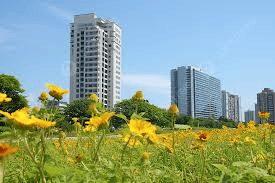Oriental rugs are renowned for their intricate designs, vibrant colors, and the cultural history they embody. Over time, however, even the most carefully maintained rugs can suffer from wear and tear. Restoration of Oriental Rugs is the art of returning these precious pieces to their original beauty, preserving both their aesthetic value and historical significance. Let’s explore the key aspects of Restoration of Oriental Rugs, highlighting the steps involved in the process and the importance of expert care.
1. Understanding the Importance of Oriental Rugs
Oriental rugs are more than just decorative pieces—they are woven artifacts that carry centuries of tradition. Each rug often tells a unique story through its patterns, colors, and materials. The preservation of these rugs not only maintains their visual appeal but also protects the heritage and craftsmanship of the artisans who created them. Oriental rug restoration allows these timeless pieces to continue to be enjoyed for generations to come.
2. Assessing the Condition of the Rug
The first step in Oriental rug repair is a thorough assessment of the rug’s condition. This involves examining the fabric, knots, dye, and overall structure to determine the extent of the damage. Common issues include fraying edges, worn areas due to foot traffic, color fading, and damage from stains or pets. Identifying these issues early on is crucial for determining the best course of action and ensuring the restoration process is carried out with precision.
3. Cleaning and Restoration Techniques
Once the rug’s condition has been assessed, the next step is to carefully clean it. Cleaning is essential for removing dirt, dust, and stains that accumulate over time. However, cleaning must be done with great care to avoid damaging the delicate fibers. Special techniques and gentle cleaning agents are used to ensure the rug’s integrity is maintained.
After cleaning, the restoration process begins. This includes re-knotting areas where the threads have loosened, repairing or replacing worn-out fringes, and re-dyeing faded sections to restore the rug’s original colors. The goal is to make the repairs as seamless as possible, so the rug retains its authentic character while regaining its original beauty.
4. Restoring the Rug’s Structure
In addition to aesthetic repairs, structural restoration is often required. Oriental rugs are woven on looms, and over time, the foundation of the rug may become weakened or damaged. Skilled craftsmen use various techniques to reinforce the rug’s structure, ensuring that it remains durable and functional. This step is particularly important for maintaining the rug’s long-term integrity, especially if it is used in high-traffic areas.
Final Thought
Restoration of Oriental Rugs is a delicate and skilled process that requires expertise and attention to detail. By restoring these beautiful pieces, we preserve not only their aesthetic value but also the cultural heritage they represent. At David Oriental Rugs, we take great pride in our ability to breathe new life into Oriental rugs, ensuring they continue to be cherished and admired for years to come.

